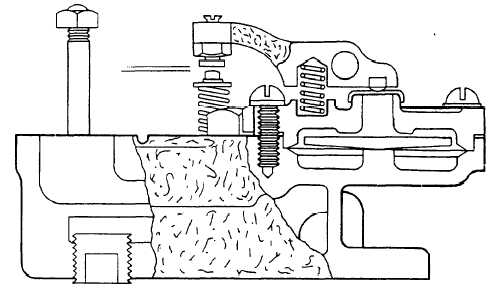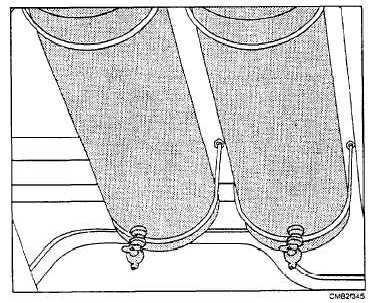The UNLOADER assembly (fig. 7-43) is mounted in the compressor head and controlled by the governor. The unloader valve may be either a poppet-type or a spring-loaded control valve. Air pressure from the governor opens the unloader valves to unload or stop compression in the compressor.
When the reservoir air pressure reaches the maximum setting of the governor, air under pressure is allowed by the governor to pass into a cavity below an unloading diaphragm. This air pressure lifts one end of the unloading lever, which pivots on its pin and forces the unloading valves off their seats. With the unloading valves off their seats, the unloading cavity forms a passage between the cylinders above the pistons. Air then passes back and forth through the cavity between the cylinders and compression is stopped. A drop in air pressure below the minimum setting of the governor causes it to release the air pressure from beneath the unloading diaphragm, allowing the unloading valves to return to their seats resuming compression.
AIR TANKS (RESERVOIRS)
The two steel air tanks, commonly known as reservoirs, are used to cool, store, remove moisture from the air, and give a smooth flow of air to the brake system.
At the bottom of each tank is a drain valve (fig. 7-44). This valve is used to allow the operator a means to drain the air from the tanks daily, thereby preventing

Figure 7-43. - Unloader assembly.

Figure 7-44. - Air reservoir with an air drain valve.
Continue Reading